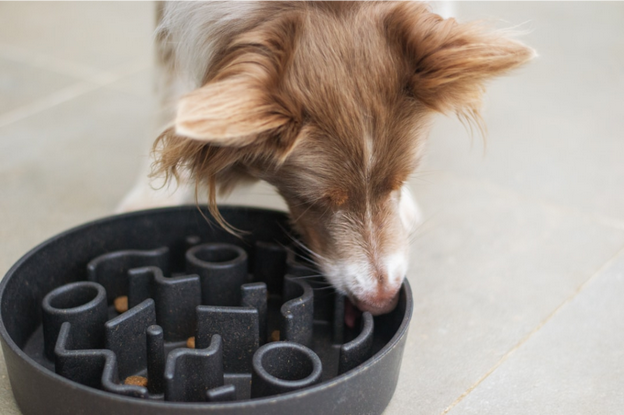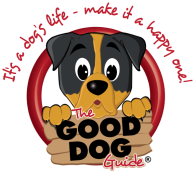Are you tired of dealing with a speed demon who inhales food in seconds, leaving you worried about bloat or indigestion? Or maybe you have a picky prince who grazes on kibble throughout the day like it’s an endless buffet. Whatever your pup’s eating style, a slow feeder might just be the game-changer you’ve been searching for.

Dogs have unique personalities, and their eating habits are no different. Enter the slow feeder dog bowl – a simple yet smart solution that can help prevent health issues, support better digestion, and turn boring meals into brain-boosting games. Whether you have a calm eater, a relentless chewer, or a turbocharged gulper, this guide will help you find the perfect match for your furry friend.
Why Use a Slow Feeder Dog Bowl?
If you’re wondering why slow feeders are worth considering, the answer is simple—they bring a range of benefits to both your dog’s health and happiness. Dogs that eat too quickly often face issues like choking, vomiting, or even more severe conditions such as gastric torsion (bloat).
Slow feeders are designed with ridges, grooves, or puzzle-like patterns that naturally encourage your dog to eat at a slower pace. This small change makes a big difference. It promotes healthier digestion, reduces discomfort after meals, and can even prevent overeating.
But there’s more. Slow feeders also provide mental stimulation. Mealtime becomes a mini challenge that exercises your dog’s brain as well as their belly. For pups who get bored easily or love solving problems, this can be a fun and rewarding upgrade to their daily routine.
Think of it as a toy, a training tool, and a health boost—all rolled into one.
How to Introduce a Slow Feeder Bowl to Your Dog
Switching to a slow feeder doesn’t have to be a dramatic change. In fact, it’s best if it isn’t.
Start by offering a small portion of your dog’s regular food in the new bowl. Let them sniff, explore, and get familiar with the texture and shape. Some dogs adapt right away, while others might need a few tries to get the hang of it.
Use positive reinforcement: offer verbal praise, gentle encouragement, or even a few treats when your dog shows interest or successfully eats from the bowl. The goal is to create a positive association.
Keep the transition low-pressure. Monitor your dog for signs of frustration or confusion. If needed, try introducing the slow feeder during snack time or with wet food, which may be easier to navigate at first. Patience pays off—and soon, your dog may even prefer the slow feeder experience.
Finding the Right Slow Feeder for Your Dog’s Personality
Not all slow feeders are created equal. Just like dogs, they come in a range of shapes, sizes, and functions. The trick is choosing one that fits your pup’s eating style and energy level.
1. The Speed Demon
Traits: Guzzles food in seconds, barely chews, prone to hiccups or vomiting.
Why It’s a Problem: Eating too fast increases the risk of bloat, poor digestion, and even choking.
Best Feeder Type: A deep bowl with a complex maze or spiral design. These create natural barriers that slow down eating by forcing your dog to navigate through twists and turns.
2. The Calm Eater
Traits: Takes their time, chews thoroughly, not easily distracted.
Why It’s a Problem: Honestly? It’s not. But even calm eaters can benefit from a little extra stimulation.
Best Feeder Type: A shallow slow feeder with moderate ridges. It adds a bit of challenge without causing frustration.
3. The Curious Chewer
Traits: Bites everything, including their bowl. Chews out of boredom, stress, or habit.
Why It’s a Problem: They may destroy plastic bowls or swallow pieces, leading to injury.
Best Feeder Type: A tough, chew-resistant bowl made from heavy-duty materials like silicone or stainless steel.
Pro Tip: Yomp feeders are made to last, with durable, dog-safe materials that resist wear and tear.
4. The Picky Grazer
Traits: Eats a little, walks away, returns later. More interested in the floor than the food.
Why It’s a Problem: Grazing makes portion control difficult and may lead to spoiled food or missed nutrients.
Best Feeder Type: A visually engaging feeder with wide openings and gentle ridges.
5. The Anxious Eater
Traits: Nervous around food, avoids eating when others are near, may gobble or avoid food altogether.
Why It’s a Problem: Anxiety disrupts digestion and may cause inconsistent eating habits.
Best Feeder Type: Soft-edged silicone bowls or feeders with calming colors and a simple layout.
6. The Multi-Dog Challenger
Traits: Competes for food, eats faster when other dogs are nearby.
Why It’s a Problem: Rushed eating and food aggression.
Best Feeder Type: Individual slow feeders for each dog with non-slip bases.
Final Thoughts: Make Mealtime Better for Every Pup
No matter your dog’s eating quirks, a slow feeder can help you create a safer, more enjoyable mealtime. From improving digestion to reducing anxiety and boredom, it’s a small investment with big returns for your dog’s health and happiness.
The right slow feeder isn’t just about slowing your dog down—it’s about honoring who they are. Whether you’ve got a gulper, a grazer, or a goofy genius, there’s a feeder that fits.
Article Supplied
